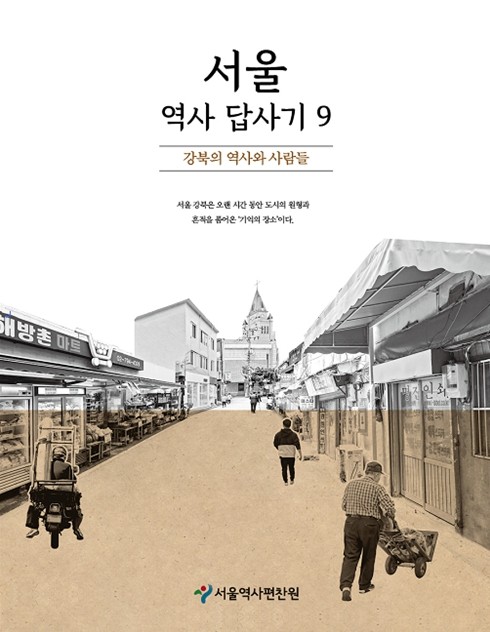The Seoul History Compilation Committee has published the ninth volume of the “Seoul Historical Expedition”, titled “The History and People of Gangbuk”, which records the major neighborhoods in the northern part of the Han River with citizens and historians. This book sheds light on how the city of Seoul has accumulated and reproduced memories by following the historical traces left throughout the Gangbuk region.

Since 2004, the Seoul History Compilation Committee has been operating the “Seoul History and Culture Exploration” program, which explores modern and contemporary history of Seoul with citizens and historians. The ninth volume, based on exploration results throughout 2024, focuses on seven regions: Dongdaemun-Cheongnyangni, Haebangchon-Itaewon, Changsin-dong, Ttukseom Hangang Park-Hwayang-dong, Mapo, Changdong, and Inhyeon-dong Printing Alley.
The book unfolds the historical formation of each region through storytelling, centering on the themes of “transportation, industry, leisure, people, and migration”. It particularly captures the changes of the Gangbuk area, which still holds past traces despite rapid development, from the perspective of citizens, enhancing its value as a history exploration guide in daily life.
According to the book, Dongdaemun was a gate of Hanyang Fortress during the Joseon Dynasty and a starting point for tram operation in modern times. It is a representative area that grew with the intertwining of transportation and industry. After the Korean War, refugees began making and selling clothes using fabric from US military bases, marking the origin of today’s Dongdaemun clothing industry. At the time, sewing factories in Changsin-dong handled production, quickly developing Dongdaemun into an industrial cluster capable of planning and producing clothing.
Haebangchon and Itaewon are villages formed amidst the traces of war and colonialism. Itaewon was created when the Japanese military established a base in the Yongsan area before and after the Russo-Japanese War, leading natives to settle there. Haebangchon was developed on the site of a Shinto shrine at the end of Japanese colonial rule. Even after liberation, the slow development continued with the establishment of US military bases, but it is now a renowned area for enjoying diverse food and culture.
“Seoul Historical Expedition Volume 9” reflects on the spatial significance of the Gangbuk region, where the modern and contemporary history of Seoul is well preserved, amidst the swift development flow. Recognized as a “place of memory”, Gangbuk stands out as an area where citizens’ daily lives and history coexist, adding further meaning to the book.
The Seoul History Compilation Committee aims, through this exploration record, to three-dimensionally capture the formation and changes of each neighborhood, restore vanished or transformed traces, allowing citizens to read Seoul’s timeline together.
“Seoul Historical Expedition Volume 9: The History and People of Gangbuk” has been available for purchase online at the “Seoul Books” since September 30, and can also be read as an e-book on the Seoul History Compilation Committee’s website and in public libraries throughout Seoul.
Lee Sang-bae, the Director of the Seoul History Compilation Committee, expressed hope that this expedition record would encourage citizens to take an interest in the history of their own neighborhoods and continue the timeline of Seoul together.